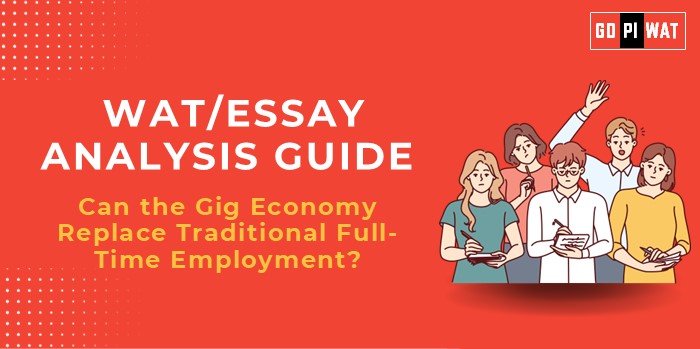📋 Can the Gig Economy Replace Traditional Full-Time Employment?
🌐 Introduction
- Opening Context: The gig economy, defined by short-term contracts and freelance work, has disrupted traditional employment paradigms globally. With over 57 million gig workers in the U.S. alone (2023), it has become a key discussion point for its economic and social implications.
- Topic Background: Emerging with the rise of digital platforms like Uber, Upwork, and TaskRabbit, the gig economy caters to flexibility and autonomy but also raises questions about job security, benefits, and worker rights.
📊 Quick Facts and Key Statistics
- 👨💻 Gig Workers in the U.S. (2023): 57 million (36% of the workforce) – highlights the rapid growth of this employment model.
- 🌍 Global Gig Market Value: $455 billion in 2023 – signifies economic importance.
- 🇮🇳 India’s Gig Workforce: 15 million workers in 2023 – projected to grow by 50% by 2027.
- 📋 Worker Preferences: 78% of gig workers value flexibility over benefits (Statista 2023).
🏗️ Stakeholders and Their Roles
- Workers: Seek flexibility and autonomy but face insecurity in benefits and wages.
- Employers/Platforms: Optimize costs and efficiency while creating innovative work opportunities.
- Governments: Struggle to regulate and provide social safety nets.
- Unions and Advocacy Groups: Advocate for workers’ rights, minimum wages, and benefits.
- Consumers: Benefit from affordable services but indirectly influence worker conditions.
🎯 Achievements and Challenges
🏆 Achievements:
- 💰 Economic Contribution: The gig economy added $1.2 trillion to the U.S. GDP in 2023.
- 🔄 Employment Flexibility: Allows workers to balance life priorities while earning.
- ⚙️ Business Efficiency: Companies save on operational costs and hire talent on demand.
- 📱 Tech Enablement: Platforms like Uber and Upwork demonstrate successful business models.
⚠️ Challenges:
- 🚫 Lack of Benefits: Health insurance, retirement plans, and paid leave remain absent.
- ⏳ Job Insecurity: Workers are often vulnerable to demand fluctuations.
- ⚖️ Regulatory Gaps: Countries lack comprehensive laws to protect gig workers.
- 🌍 Global Comparisons: While Estonia has advanced gig worker policies, countries like India lag behind.
🗣️ Structured Arguments for Discussion
- Supporting Stance: “The gig economy represents the future of work by fostering innovation, flexibility, and economic growth.”
- Opposing Stance: “The gig economy undermines job security and perpetuates income inequality.”
- Balanced Perspective: “While the gig economy offers flexibility, its potential to replace full-time jobs depends on addressing worker rights and benefits.”
🛠️ Effective Discussion Approaches
- Opening Approaches:
- 📈 Statistics Lead: “With the gig economy generating $455 billion globally, its economic impact cannot be ignored.”
- ⚖️ Contrast Start: “While 36% of the U.S. workforce embraces gig work, concerns about benefits persist.”
- Counter-Argument Handling:
- ✔️ Acknowledge: “Flexibility is undeniable.”
- ✖️ Counter: “However, lack of social security undermines its viability as a full-time replacement.”
📈 Strategic Analysis (SWOT)
- Strengths: Flexibility, cost-efficiency, access to global talent pools.
- Weaknesses: Lack of worker protections, income instability.
- Opportunities: Integration with AI, global policy standardization.
- Threats: Rising unemployment, over-reliance on technology.
🎓 Connecting with B-School Applications
- Real-World Applications: Analyze gig models for operations, project management, or HR policies.
- Sample Interview Questions:
- 💻 “What is the role of technology in enabling the gig economy?”
- 🌍 “Can gig work sustain economies in the long term?”
- Insights for B-School Students: Explore emerging policies for gig workers, and consider internships with platforms leveraging gig-based hiring.
📄 Source: Comprehensive GD and WAT Guide for B-School Aspirants


